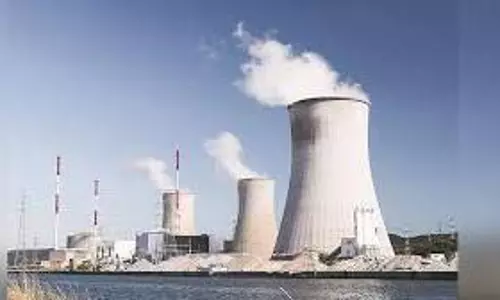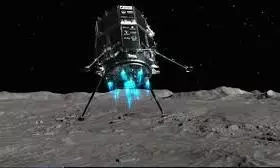
Japan’s Resilience Lunar Lander crashes during descent, ispace commits to learning from setback
text_fieldsJapan’s latest attempt at a private lunar landing ended in disappointment as the Resilience lander, developed by Tokyo-based space firm ispace, crashed on the Moon during its final descent.
The company confirmed the failure occurred just 1 minute and 45 seconds before the scheduled touchdown on June 5 at 3:17 p.m. EDT.
Aimed at landing in the Mare Frigoris region on the Moon's near side, the Resilience Lander lost communication moments before its expected soft landing.
According to ispace, a delayed input from the lander’s laser rangefinder caused a critical failure in adjusting its descent speed, leading to a “hard landing.”
“Supporters are disappointed,” ispace CFO Nozaki said, “but ispace has yet to cover the moon, and the road does not end, even if Mission 2 didn't go as planned.”
The lander, standing 7.5 feet tall and weighing 2,200 pounds, was launched aboard a SpaceX Falcon 9 rocket in early May as part of ispace’s Hakuto-R Mission 2. It was carrying five payloads, including the Tenacious rover and various scientific instruments, all of which were lost in the crash.
CEO Takeshi Hakamada acknowledged the failure and offered an apology. “Supporters are disappointed,” he said, adding that the experience would serve as a foundation for future missions.
This is ispace’s second unsuccessful attempt to land on the Moon, following a similar crash during Hakuto-R Mission 1 in 2023 caused by an uncorrected altitude sensor fault. While both efforts have ended in failure, Mission 2 marked a technological improvement by reaching the Moon and initiating descent.
The incident places Resilience among other private lunar landing failures, such as Israel’s Beresheet and the U.S.-based Peregrine missions. However, successful landings by missions like Odysseus and Blue Ghost show commercial lunar exploration remains within reach.
Despite the setback, ispace remains undeterred. The company is already moving forward with plans for its third and fourth missions, including deploying the more advanced Apex 1.0 lander. Hakamada emphasised that identifying the root cause of the crash is now the team’s top priority, stating that the lessons learned will strengthen future missions.























